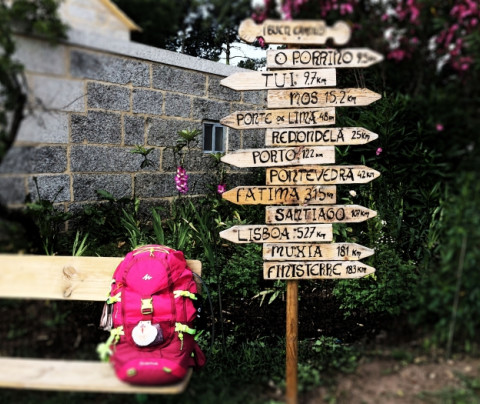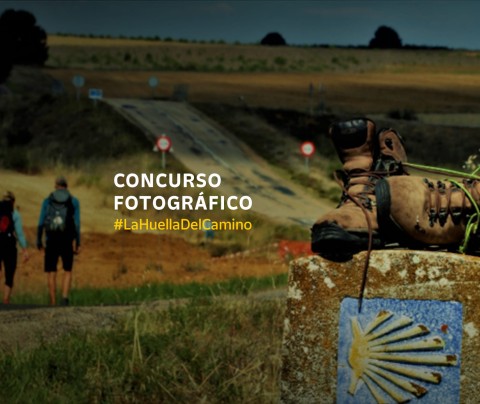The Way with Correos
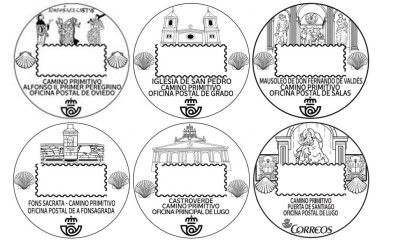
The Camino Primitivo is a historical route, considered the oldest Camino to Santiago. The first of all Caminos, references to it dating back to the 9th century, when King Alfonso II the Chaste began his pilgrimage to the tomb of the Apostle, which had just been discovered.
Alfonso II would start from Oviedo to cross Asturias, entering Galicia through the province of Lugo on the road to Santiago. The route tread by Alfonso II of Asturias traverses the western conceyus of Las Regueras, Grado, Salas, Tineo, Pola de Allande and Grandas de Salime, from which one enters Lugo by way of A Fonsagrada, to then link Palas de Rei with the Camino Francés before arriving to Santiago de Compostela.
In this way, Oviedo and Lugo are the two reference points of the Camino Primitivo. Two points that the Post Office has chosen to consecrate the first postmarks dedicated to the Camino Primitivo.
Primitive Postmarks
THE POST OFFICE has designed the first postmarks dedicated to the Camino Primitivo and the protagonists are Alfonso II the Chaste, considered the first pilgrims, and the Gate of Santiago of the Roman walls of Lugo.
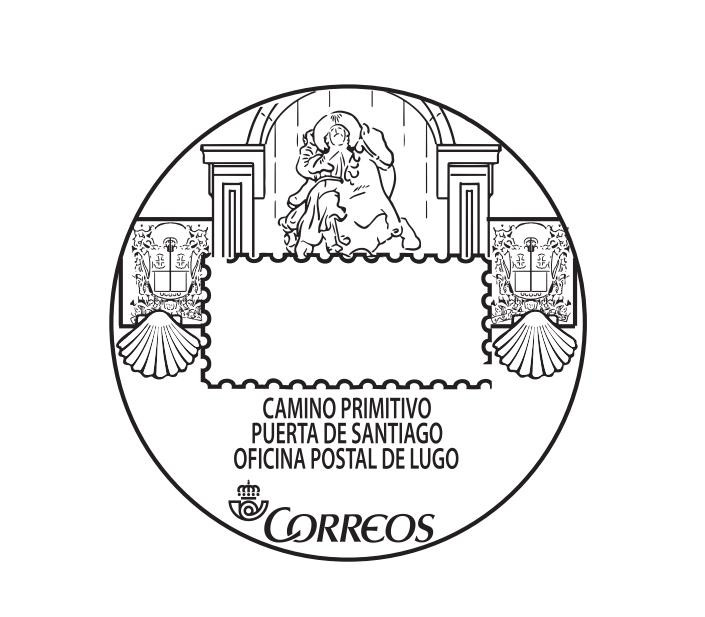
THE POST OFFICE has designed the first postmarks dedicated to the Camino Primitivo and the protagonists are Alfonso II the Chaste, considered the first pilgrims, and the Gate of Santiago of the Roman walls of Lugo.
The first postmark that the POST OFFICE dedicated to the oldest Jacobean route is the walls of Lugo, and will permit this image and its Gate of Santiago to travel around the world through letters and postcards with its stamp.
These postmarks, which will be used to seal the credentials of pilgrims that request them to certify their passage through the capital of Lugo, and thus obtain their Compostela upon arrival to Santiago, will undoubtedly be very special for all pilgrims choosing the Camino Primitivo.
The illustration of this unpublished postmark is the vaulted arch that appears on top of this gate, also known as the Postigo, with the sculpture of the Apostle on horseback and the coat of arms of Bishop Izquierdo, accompanied by the Shell of Santiago. In the centre, there is a space to place the date of the postmark and the text "Camino Primitivo. Gate of Santiago. Post Office of Lugo."
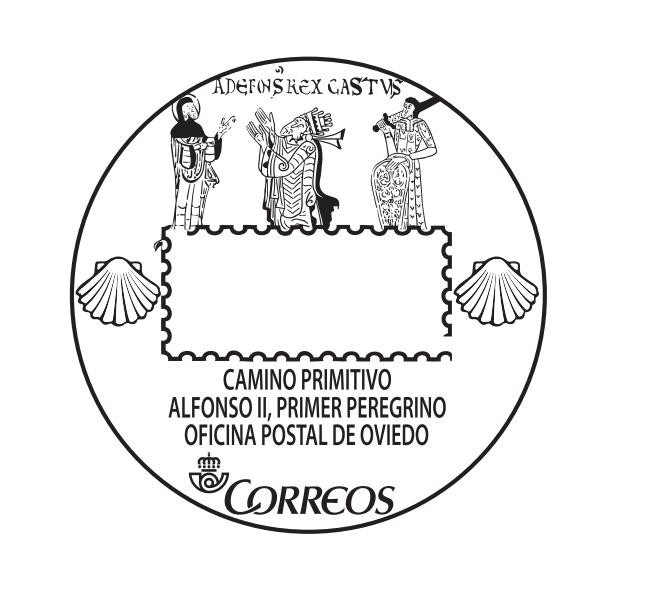
The postmark of Oviedo is added that of Lugo as a pioneer within the historic route of the Camino Primitivo. With this stamp, the image of Alfonso II the Chaste will seal the credentials of pilgrims who request it to certify their passage through the capital of the Principality of Asturias. With this, we will have one of the stamps necessary to achieve the Compostela, which accredits the pilgrim's journey to Santiago de Compostela.
Additionally, in this way, the illustrated stamp of Alfonso II of Asturias will also travel around the world with letters and postcards bearing this postmark.
In this illustration, you can see the details of the miniature of Alfonso II in the Book of the Testaments of the Cathedral of Oviedo. As in the postmark of the Gate of Santiago, in the centre there is a space to place the date of the postmark with the text "Camino Primitivo." Alfonso II, First Pilgrim. Post Office of Oviedo."
Memories and collecting
These postmarks will undoubtedly be a great memory for pilgrims that stamp their Credential of the Camino de Santiago. Furthermore, stamping this credential at the Post Offices along the Camino Primitivo, will allow you to find other postmarks, which, although not specifically dedicated to the Jacobean route, do represent different historical locations, including the A Fonsagrada.
Facing the Camino Primitivo
The Camino Primitivo is next to the Camino del Norte, one of the two routes that crosses Asturias. The Camino del Norte borders the impressive coastline of the Cantabrian Sea, passing beautiful beaches and large antilles. The Primitivo, on the other hand, runs through the interior of Asturias, where we can come to understand the essence of this rugged land, which offers beautiful mountain landscapes. This feature imparts hard stages to the Camino Primitivo, which alternate between ascents and descents, passing mud roads and trails, typical of mountains and the interior territory. However, the gratifying nature of the landscape, and the existence of a continuous network of hostels and lodging, make this a preferred stage for pilgrims. Asturian cuisine is another extra, and after a hard stretch, you can enjoy typical dishes of this area and the tasty products that are made in the interior of the Principality.
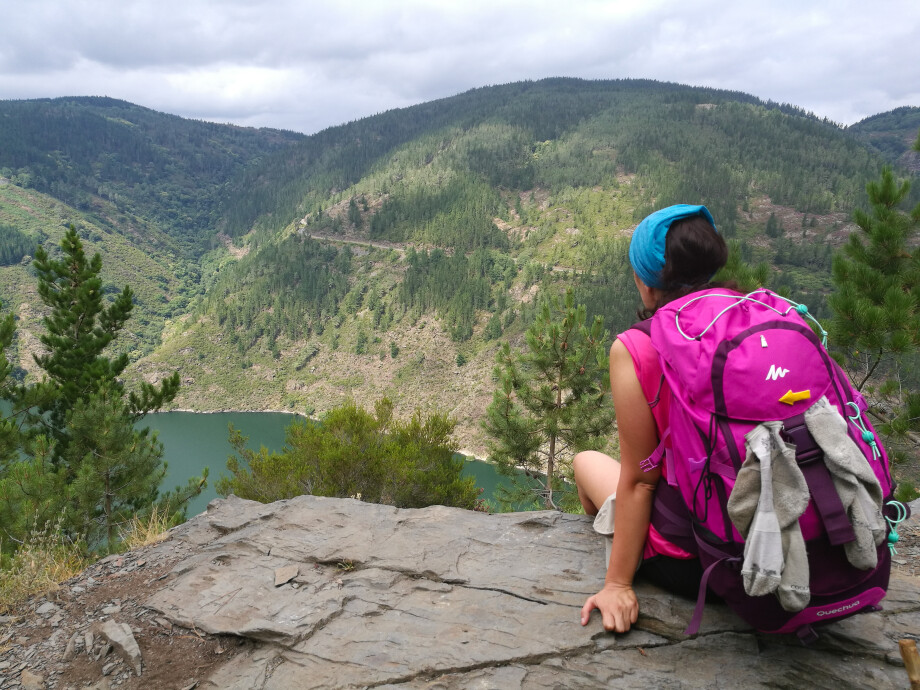
So now you know, if you decide to travel the Camino Primitivo, you can enjoy its benefits, but you'll also face challenges that you can later celebrate with a tasty dish. And, for a lasting memory, on your Pilgrim Credential, you’ll have the stamp of the two postmarks that the Post Office has created to honour the first historic pilgrimage route to Santiago de Compostela.
¡¡¡Safe travels, pilgrims!!!
Your email address will not be published.
Mandatory fields are marked with *




